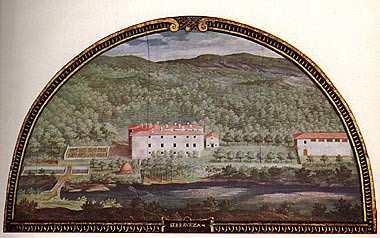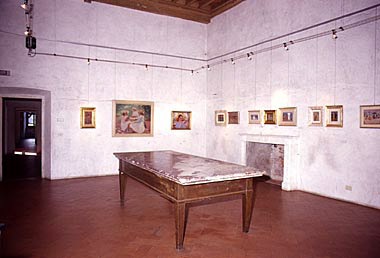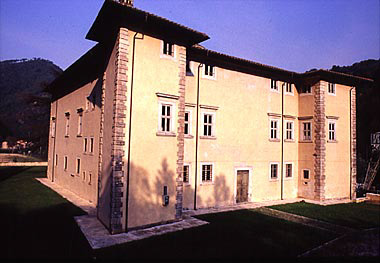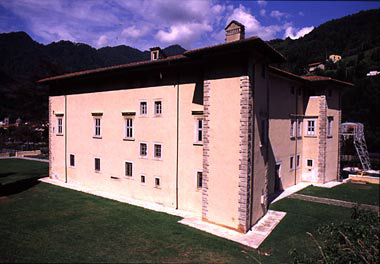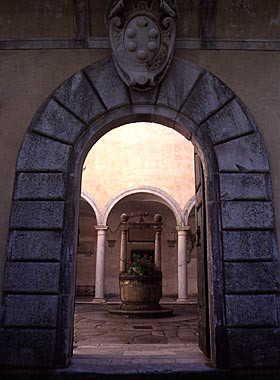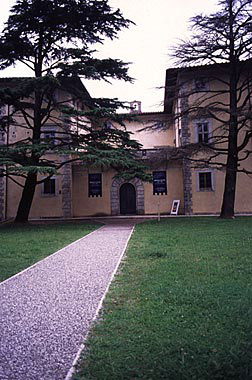Palazzo Mediceo of Seravezza

Information
District:
Versilia
Building dating:
1561-1565
Fax:
0584 75816
District/Location:
Seravezza
Telephone:
+39 0584 756046

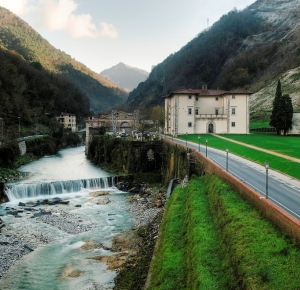
The palace of Seravezza is a residence of the Medici family and does not belong to the cultural framework of the Lucchese villas from the renaissance period . Infact, Seravezza, which is a very important centre for marble extraction, today belongs to the province of Lucca but was not part of it in the 1500's.
The building presents itself as a fortified palace and was to serve as a resting place for the Duke when he came to visit the caves.The building consists of three main bodies which mark the limits of a courtyard which is closed off by a wall on the south wing. The main entrance door is on the wall, which when opened, gives access to a courtyard with a portico and a well. The structure of the palace has a disguised defensive form i.e. the east and west wings jutt out from the north façade and the south wall of the courtyard almost forming towers, but they don't exceed the height of the remainder of the building. The palace is very sober in its composition. The use of marble in the cornices of the windows should not be considered a sign of splendour as there was an abundance of marble in Seravezza.
Today, the public library and the Museum of work and popular traditions of historic Versilia Important contemporary and modern art exhibitions are also held here.
The building presents itself as a fortified palace and was to serve as a resting place for the Duke when he came to visit the caves.The building consists of three main bodies which mark the limits of a courtyard which is closed off by a wall on the south wing. The main entrance door is on the wall, which when opened, gives access to a courtyard with a portico and a well. The structure of the palace has a disguised defensive form i.e. the east and west wings jutt out from the north façade and the south wall of the courtyard almost forming towers, but they don't exceed the height of the remainder of the building. The palace is very sober in its composition. The use of marble in the cornices of the windows should not be considered a sign of splendour as there was an abundance of marble in Seravezza.
Today, the public library and the Museum of work and popular traditions of historic Versilia Important contemporary and modern art exhibitions are also held here.
Viale Leonetto Amadei, 230, 55047 Seravezza LU
The work involved in the construction of this palace, comissioned by Cosimo I of the Medicea family, starter in 1561 and was completed in 1565. The identity of the architect is not clear. Buselli argues that Buontalenti was the architect responsible for the palace given strong similarities found in the later Villa di Artimino. However, Belli Barsali is inclined to believe that the architect is Ammannati due to the design of the cornices in the windows and the use of wide and narrow ashlars on the corners and the main entrance. Belli Barsali also highlights a similarity between the plan of the palace of Seravezza and that of palazzo Pitti, where Ammannanti worked between 1559 and 1568.
- BELLI BARSALI ISA, Ville e committenti nello stato di Lucca, Maria Pacini Fazzi, Lucca, 1980
- BUSELLI F., Palazzo mediceo a Seravezza, Empoli, 1965
Scopri altre attrazioni vicino a Palazzo Mediceo of Seravezza
See allYou may also like..
See allFind more
0








